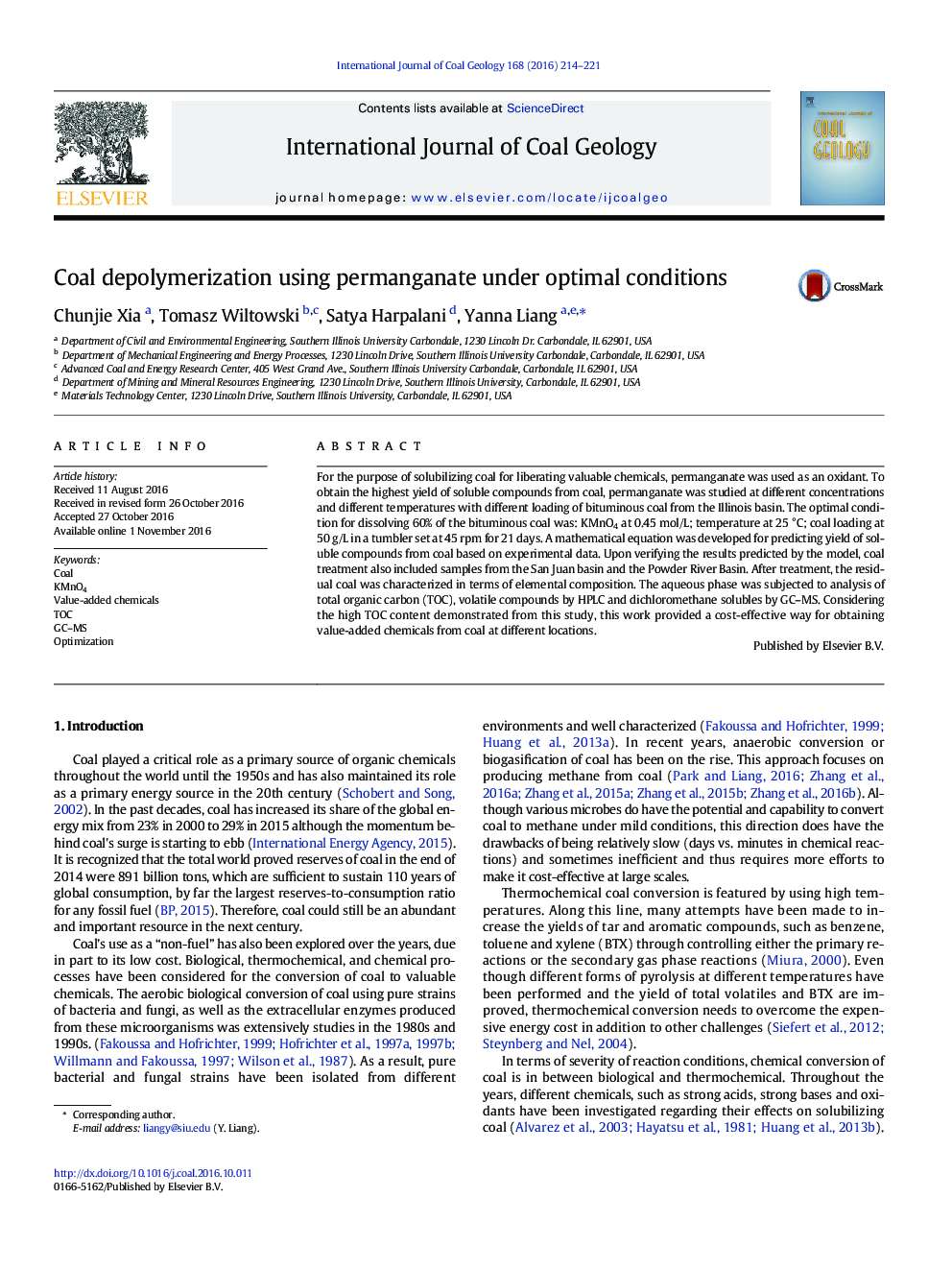| Article ID | Journal | Published Year | Pages | File Type |
|---|---|---|---|---|
| 5483808 | International Journal of Coal Geology | 2016 | 8 Pages |
Abstract
For the purpose of solubilizing coal for liberating valuable chemicals, permanganate was used as an oxidant. To obtain the highest yield of soluble compounds from coal, permanganate was studied at different concentrations and different temperatures with different loading of bituminous coal from the Illinois basin. The optimal condition for dissolving 60% of the bituminous coal was: KMnO4 at 0.45 mol/L; temperature at 25 °C; coal loading at 50 g/L in a tumbler set at 45 rpm for 21 days. A mathematical equation was developed for predicting yield of soluble compounds from coal based on experimental data. Upon verifying the results predicted by the model, coal treatment also included samples from the San Juan basin and the Powder River Basin. After treatment, the residual coal was characterized in terms of elemental composition. The aqueous phase was subjected to analysis of total organic carbon (TOC), volatile compounds by HPLC and dichloromethane solubles by GC-MS. Considering the high TOC content demonstrated from this study, this work provided a cost-effective way for obtaining value-added chemicals from coal at different locations.
Related Topics
Physical Sciences and Engineering
Earth and Planetary Sciences
Economic Geology
Authors
Chunjie Xia, Tomasz Wiltowski, Satya Harpalani, Yanna Liang,
